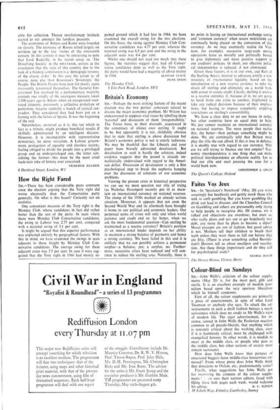How the Right Fared
Sm,—There has been considerable press comment since the election arguing that the Tory right did worse electorally than the Conservative party generally. On what is this based? Certainly not on statistics.
One convenient measure of the Tory right is the Monday Club, whose candidates in fact did rather better than the rest of the party. In seats where there were Monday Club Conservative candidates, the swing to Labour was 2.77 per cent, compared with a national swing of 3.1 per cent.
It might be argued that this superior performance was explained entirely by geographical factors. With this in mind, we have examined the swings in seats adjacent to those fought by Monday Club Con- servative candidates. The average swing for these adjacent areas was 3.5 per cent. In case it were sug- gested that the Tory right in 1966 had merely re- gained ground which it had lost in 1964, we have examined the overall swing for the two elections. On this basis, the swing against Monday Club Con- servative candidates was 4.77 per cent, whereas the national swing was 6.5 per cent and the swing in the adjacent seats was 6.4 per cent.
Whilst one should not read too much into these figures, the statistics suggest that, had all Conser- vative candidates done as well as the Tory right, the party would have had a majority of about twenty
PIERS DIXON
The Monday Club, 6 Elm Park Road, London, SW3


































 Previous page
Previous page